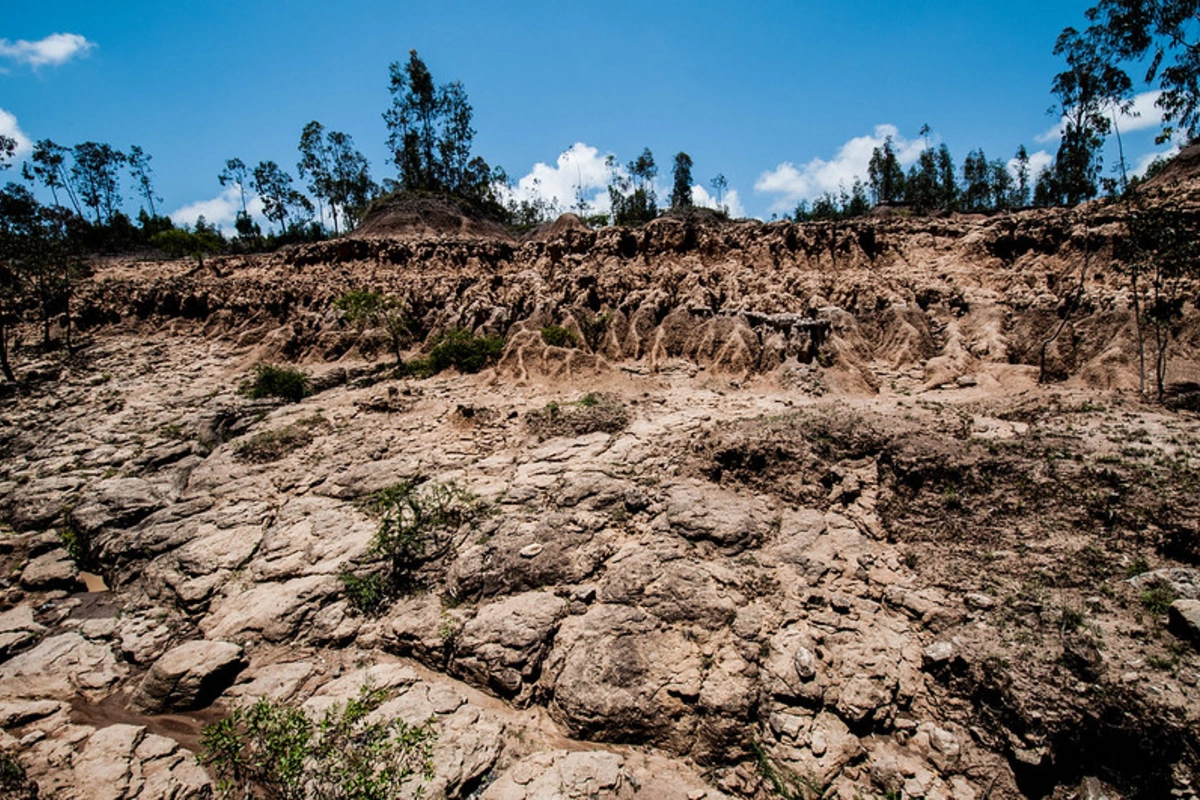
Conditions are particularly acute in Tajikistan, where almost one-third of the country’s agricultural land is in “critical condition,” according to a report published by the Asia-Plus news agency.
Photo: resoilfoundation.org
Agricultural land in Central Asia and the Caucasus is degrading at an alarming rate. Officials did a lot of handwringing about the issue during a roundtable at the recently completed COP29 environmental conclave. But in highlighting urgent needs, participants didn’t proffer many ideas about how to mitigate the myriad challenges, The Caspian Post reports citing foreign media.
Globally, about 40 percent of agricultural land is vulnerable to degradation, Azerbaijan’s agriculture minister, Majnun Mammadov, stated in his opening remarks at the roundtable, adding as much as 12 million acres of arable land around the world becomes unproductive every year.
Conditions are particularly acute in Tajikistan, where almost one-third of the country’s agricultural land is in “critical condition,” according to a report published by the Asia-Plus news agency. But such challenges as deforestation, soil salinization and over-grazing are threatening other Central Asian states too, especially Kyrgyzstan and Kazakhstan. Citing UN data, the Asia-Plus report stated that 39 percent of Central Asia’s landmass is experiencing drought.
In presenting a plan to introduce water-conserving and soil-monitoring technologies in Uzbekistan, the country’s ecology minister, Aziz Abdukhakimov, exuded a sense of urgency. “We must act quickly and decisively, otherwise we will leave only deserts for future generations,” he stated. Participants agreed that a multilateral approach was needed to address soil degradation, but no specific initiatives to promote joint action were discussed.
Even if plans had been worked out to address problems, Central Asian states lack the funds to fully implement them on their own. And that situation doesn’t look like it will change anytime soon. Developing nations say substantive climate action will take over $1 trillion per year in funding from wealthy nations. Yet, after prolonged and, at times, bitter negotiations at COP29 in Baku, wealthy nations agreed to commit $300 billion annually to address global-warming related issues, including soil degradation.
That figure marks a substantial increase over the $100 billion that wealthy nations had previously pledged to commit to help developing countries adapt to global warming conditions. But somehow everyone departed Baku full of hard feelings. Developing nations accused the globally rich of being cheap. At the same time, many wealthy nations, especially the United States and European Union members, were angry that economically advanced states, such as China and Saudi Arabia, claimed to still be developing countries not obligated to make any contribution to the COP climate action fund.
The causes of soil degradation are not new, with many linked to global warming. A report published by the UN Convention to Combat Desertification in 2022 also identified several man-made factors contributing to the loss of farmland and pasture across Central Asia, including an overreliance on cotton cultivation and inefficient irrigation practices.
The cumulative effects of soil degradation are heightening social challenges across the region, acting as a “significant trigger” for migration from the countryside to cities, resulting in increases in air pollution, according to the UN report. It also cautioned that a vicious cycle of social harm, fueling a decline in living standards in Central Asia, is taking hold.
“Land degradation, combined with increasing anthropogenic pressure caused by population growth and density, leads to a decrease in the availability of productive land and water resources, a drop in crop yields and livestock productivity,” UN study states.
Share on social media